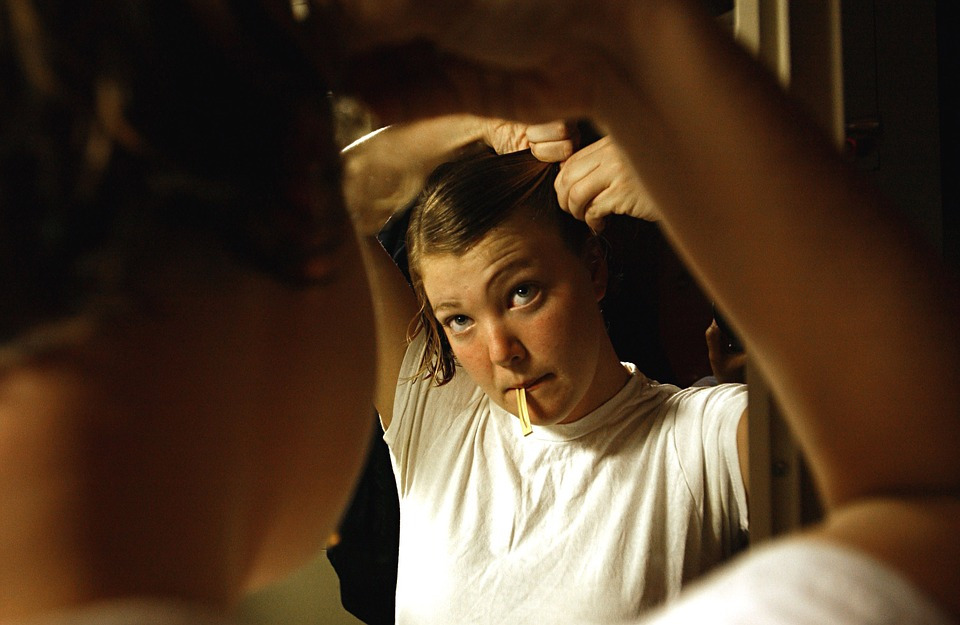Trichotillomania is a mental disorder that urges a person to pull hair from different parts of the face, scalp, and body. Many people suffering from this illness try to put an end to this habit using different methods but many of them fail. This condition usually develops in childhood or adolescence when a person undergoes stressful or traumatic events that lead them to develop this habit.
To be able to treat it, you need to know the symptoms and triggers to figure out whether it can be cured without medical attention or not. This is why we’ve gathered the following information to help you save yourself or a loved one.
Symptoms
Some symptoms are easy to spot and manage; however, for some people, it can be overwhelming and crippling to the point that they cannot do anything about it. The most common spots where you will find missing hair are the scalp, eyebrows, and eyelids. A person suffering from trichotillomania will tend to be socially or occupationally withdrawn and lack the spirit to engage in any kind of work. In stressful situations, they may feel the tension building up in their body, and the only way to release it is by pulling their hair. No matter how hard they try to fight the urge, they may end up doing it because the feeling is too strong to shake off. Some people pull strands of their hair or chew on it.
Not everyone has the same level of awareness while pulling their hair. For instance, some of them focus on the action itself to relieve stress or combat boredom. Others may do it without realizing it while watching TV or reading. Most of them engage in other behaviors such as skin picking and lip and nail-biting.
Increasing Awareness
You can try to help yourself or others by researching more about the disorder to understand its nature and how to combat it. The first step towards healing is becoming aware of the behavior and determining what triggers it. One of the most effective ways to do so is to keep a journal because the person in question will not be able to remember all the dates, events, and symptoms that they go through every day.
In a journal, a person suffering from this condition should record when they pull your hair and what kind of situations urge them to do so. It might also help to identify the location they were in and how situations make them feel. They should review their behavior weekly to track the patterns and become aware of them the next time they happen.
Another step towards becoming more aware of this behavior is identifying the triggers. These can include internal triggers, such as emotional states and physiological changes, or external factors such as people, places, and situations. In the article Trichotillomania – Hair Pulling Disorder, medical professionals state that the only outlet for some people to alleviate their stress or feel slightly better is to sensory seek through hair pulling, which diverts one’s attention from anxiety or pain. The problem is that even if they can control it, they may refuse to because they want to feel the relief that follows hair pulling.
Behavioral Therapy
One of the first lines of treatments for trichotillomania is behavioral therapy, which includes some core elements that depend on self-monitoring. The patient in question should engage in another action as soon as they feel like pulling their hair.

For instance, they should keep their hands busy with something else such as sitting on them, clenching, or using a stress ball to avoid touching their face or hair. However, the most devastating part of this kind of therapy is the relapse that usually follows, which is why patients should always seek professional help.
Medications
Some doctors resort to pharmacotherapy along with behavioral therapy to regulate the neurotransmitters responsible for this urge and to thus decrease it. If patients are clinically depressed, antidepressants are prescribed to alleviate this symptom.
Scientists argue that trichotillomania is an addiction and it can thus be treated as one. Accordingly, they suggest blocking the opioid binding effect through medications. These pills can decrease the positive sensation of pulling hair, so patients will not have a reason to do it in the first place. Other researchers suggest using atypical neuroleptics.
It is difficult to live with trichotillomania as it affects various aspects of one’s life and lowers self-esteem. Patients should accept that they are suffering from it and try to increase their awareness of this disorder to figure out ways to help themselves. It’s a condition that cannot go away on its own without any interference. If a patient cannot stop pulling their hair, they should seek help from professionals and consider medications.

